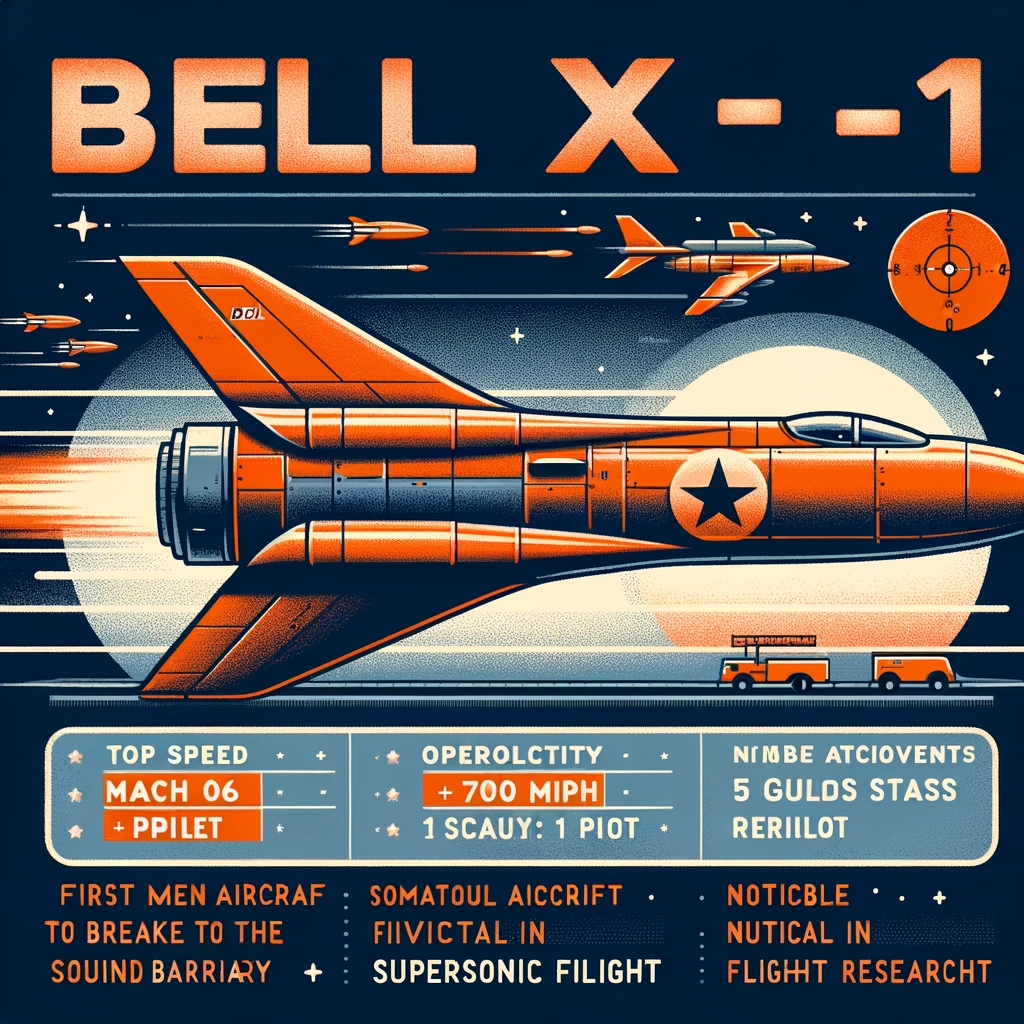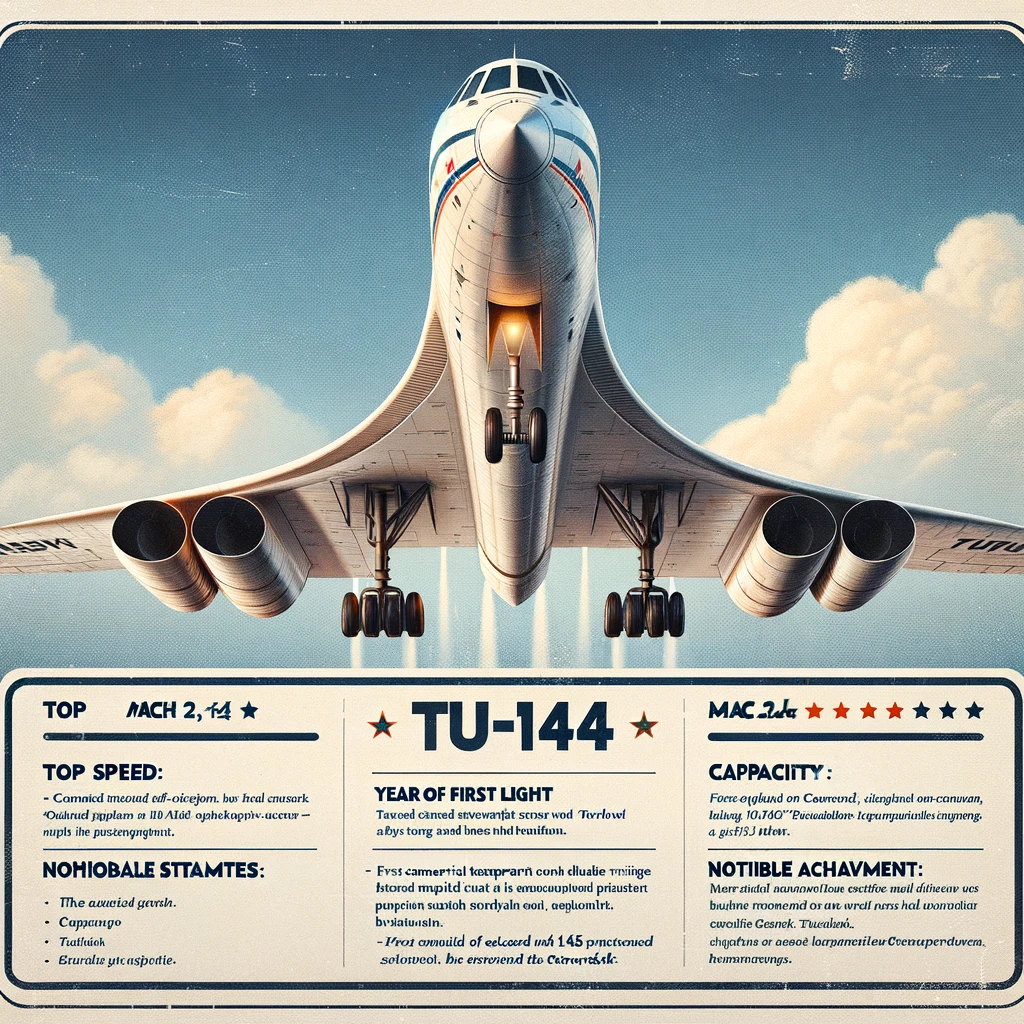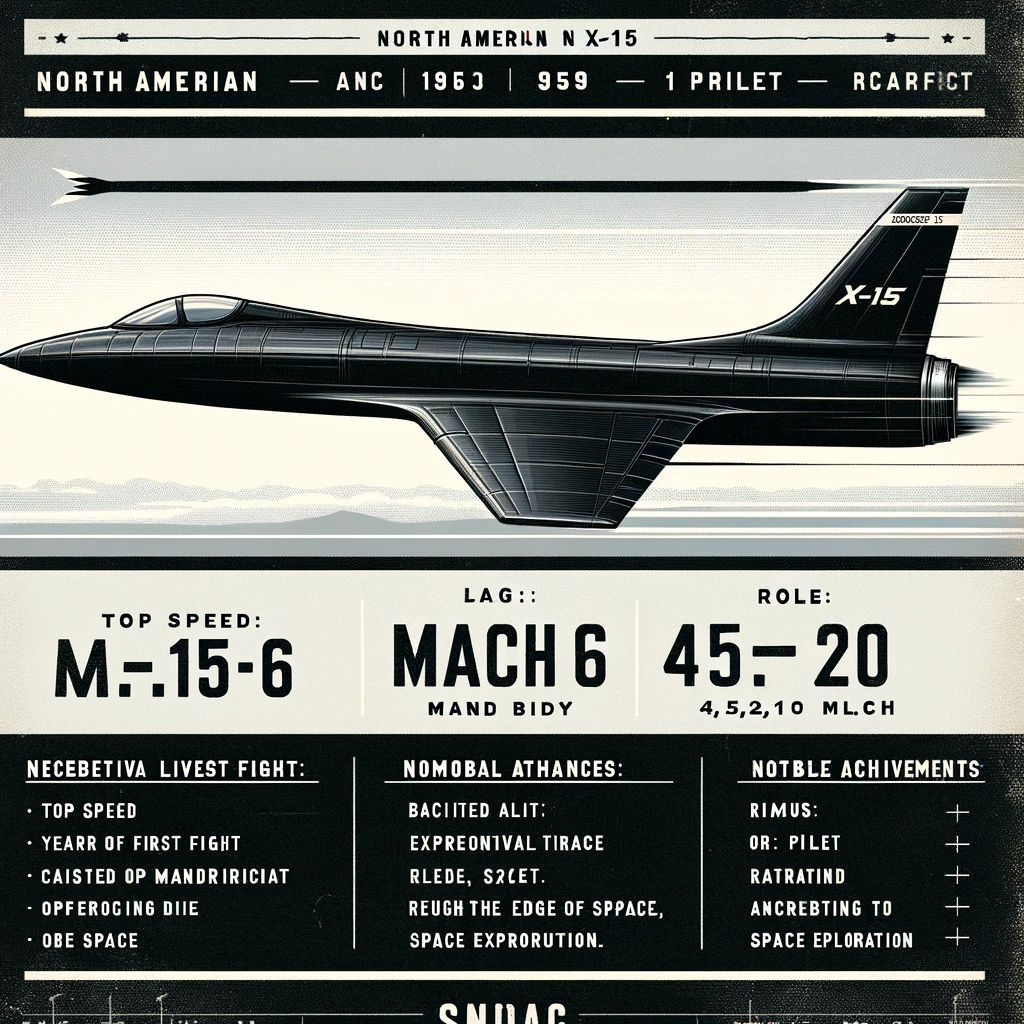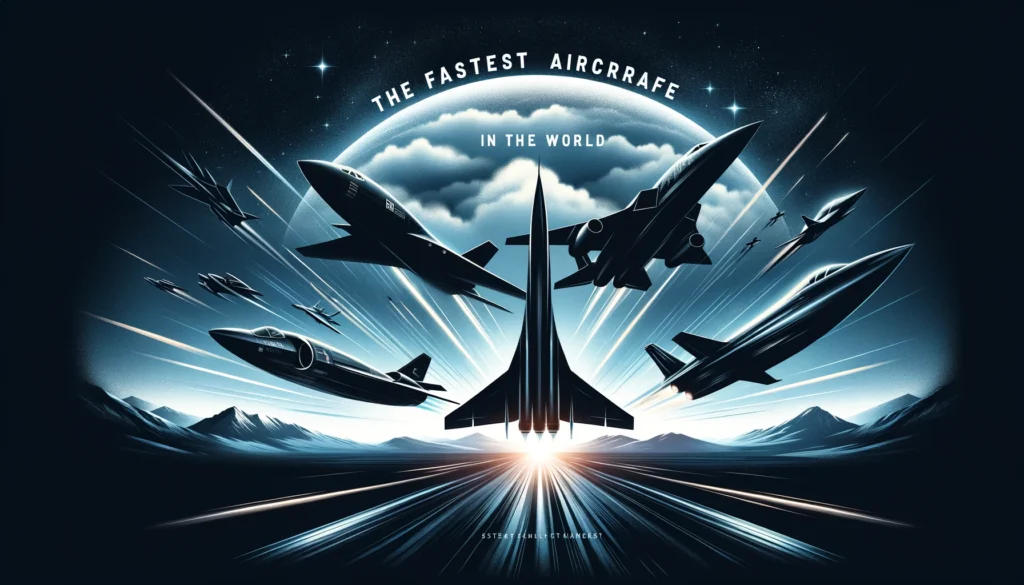Absolutely at a certain time, everybody tried to figure out which was the “Fastest Aircraft in the World” or who flies the “World’s Fastest Military Aircraft”, as we all wanted to fly superfast, so everyone wanted to ask and find out the answer.
Moreover, Discovering the historical milestones of Aviation, one can track a continuous Desire for speed from the first powered flight of the Wright Brothers to the amazing achievements made by today’s aerospace engineering. The struggle to make the “World’s Fastest Military Aircraft” is the acknowledgment of the peak of human engineering, where the combination of the most advanced materials and propulsion, so engineers can violate the Laws of physics. Our fascination with speed has pushed engineers and pilots to create and fly the World’s Fastest Aircraft that can traverse the skies faster than ever imagined by mankind, let us discuss some of the “World’s Fastest Military Aircraft” briefly.
World’s Fastest Military Aircraft: The Bell X-1 (The Sound Barrier Pioneer)

Besides all, Bell X-1, the pioneer of the World’s Fastest Aircraft title, first ever assembled aircraft that was able to surpass the speed of sound in human history, the first flight was taken by Chuck Yeager as the chief pilot in 1947, achieving the top speed of Mach 1.06, breaking the Fastest Aircraft in the World, record at that time.
This orange teardrop-shaped aircraft was a product of a partnership between NACA (National Advisory Committee for Aeronautics), which is (NASA’s precursor) and the U.S. Air Force.The Bell X-1 ejected from the bomb bay of a B-29 Superfortress planning to reach its record speeds at a high altitude. The rocket engine of this vehicle, unlike the jet engines of those days, became the driving force that made a safe landing in the history pages. The test flight of Bell X-1 destroyed a physical obstacle and smashed the psychological barrier, confirming that a controlled, supersonic flight was possible.
- Top Speed: 1.06 Mach (about 700 mph)
- Year of First Flight: 1947
- Capacity: 1 (Pilot)
- Key Features:
- First ever made aircraft able to surpass the speed of sound in level flight.
- Jet-propelled, maneuvered by Chuck Yeager.
- Has opened the doors to supersonic and hypersonic flight studies.
Lockheed SR-71 Blackbird (The Indomitable Exploration Machine)
Moreover, a top-secret project at the Skunk Works division of Lockheed, and as a result, it was regarded as the fastest manned jet-propelled aircraft of that time. During its first flight in 1964, the Blackbird was able to attain the speed of Mach 3.3, due to its advantageous design with innovative materials.
“Furthermore, Lockheed SR-71 is mostly made from Titanium to withstand extreme heat & pressure. It’s made up of a streamlined design with dark coloration, so it couldn’t get caught on the radar. Hence, it came to be later known as “Blackbird”. It served the US Air Force until 1998, accomplishing any reconnaissance mission without suffering a single loss to enemy tactics, which certainly speaks importance about its speed, altitude, and stealth capabilities.
- Top Speed: Mach 3.3 (~2200 mph)
- Year of Introduction: 1966
- Capacity: 2 Persons (PM and RSO)
- Key Features:
- Fastest air-breathing manned aircraft.
- Exploited luxury materials and art to endure high speed and temperatures.
- Done extremely risky reconnaissance missions, never been shot down by the enemy forces.
Concorde (The Dream of Supersonic Commercial Flight)
Concorde, a result of Anglo-French collaboration, served as the first and so far the only supersonic passenger airplane that could cruise at speeds of Mach 2.04. Delta wings and Olympus engines gave it the ability to bridge gaps between cities, such as London and New York, in just 3 hours, with its speed being twice as fast as it is for traditional jets, this makes Concorde the “Fastest Aircraft in the World” that can carry passenger around at that supersonic speed.
Moreover, Concorde with all its technological advancements and luxury can’t be exempted from economic competition and environmental concerns about the supersonic Boom, that led to its early retirement back in 2003.
Nevertheless, its memory lives on representing a peak moment of Supersonic Air Travel.
- Top Speed: Low mach value is more towards 2.04 (~1,354 mph).
- Year of Commercial Service Entry: 1976
- Capacity: Up to 128 passengers
- Key Features:
- The only successful supersonic passenger airliner.
- Canceled transatlantic flights in half, signified for travelers who love status and speed.
- Canceled all operations in 2003, due to economic and environmental considerations
Tupolev Tu-144 (The Soviet Sprinter of the Skies)

The supersonic Tupolev Tu-144, besides nicknamed “Concordski” or “Charger”, was the Soviet answer to the Concorde and the first jet plane in commercial service that went over the speed of Mach 2. It had a design that included canard wings that used turbojet engines to reach the top speed of Mach 2.15.
Although providing many scientific and technological breakthroughs, such as being the first commercial airplane to fly faster than Mach 2, the safety and reliability problems of the Tu-144 caused the operational life of the plane to get grounded, by providing another black page to the book of aviation history.
- Top Speed: Mach 2.15 (~2,432 km/h)
- Year of First Flight: 1968
- Capacity: Up to 140 passengers
- Key Features:
- Came in competition with the Concorde as the world’s first supersonic plane.
- The plane encountered problems and was downgraded to cargo flights when it reached retirement age.
- It is famous for having a canard design and a retractable nose cone that the pilot can look down during landing.
Mikoyan MiG-25 (The High-Altitude Foxbat)
The Mikoyan MiG-25, nicknamed “Foxbat”, back in 1964 when it was observed for the first time, showed the Western world its capability for high-speed and high-altitude operations. Reaching the record-breaking speed of Mach 3.2, with this it became one of the “World’s Fastest Military Aircraft” deployed by the U.S Airforce, at that time. Mikoyan MiG-25 was created for missions to intercept and reconnaissance.
Additionally, to speed, the Mikoyan MiG-25 for the next decades was unbeaten in altitude, range, and speed. Its creation was the direct response to the concerns of the U-2 spy planes, which were high flyers, reflecting their Western origins.
- Top Speed: Mach 3.2 is equal to ~2170 mph.
- Year of Introduction: 1970
- Capacity: 1 (Pilot)
- Key Features:
- One of the best and most swift military aircraft known for interception and observation.
- Equipped to eliminate high-altitude interceptor bombers and planes.
- Moreover, Its speed and altitude capabilities were unmatched at the time of its service
Lockheed Martin F-22 Raptor (Mastery of the Skies)
F-22 Raptor is the ultimate in U.S. fighter jet development, with a combination of stealth, agility, and capability of supersonic speed without the use of a powerful burner, that feature known as, SuperCruise.
Moreover, Introduced into service back in 2005, this Raptor can reach the top speed of Mach 2.25, making it the “World Fasted Aircraft” used by Millatery.
Additionally, It has proved to be a key facet of the United States Air Force’s tactical air power capabilities. Moreover, This aircraft’s finest feature is its Multi-role Capability, which includes its Advanced radar systems and unmatched electronic warfare capabilities, which guarantees its ultimate air dominance, making it one of the most formidable fighter aircraft ever built.
- Top Speed: Mach 2.25 (equivalent to the speed of about 2,400 km/h).
- Year of Introduction: 2005
- Capacity: 1 (Pilot)
- Key Features:
- Offers a combination of supercruise, stealth, and the latest avionics.
- Dominant in air superiority that cannot be compared.
- Moreover, it was the First deployment of a fifth-generation Fighter jet.
Boeing X-51 Waverider (The Scramjet Pioneer)
Boeing X-51 Waverider was the project that pursued the potential applications of scramjet technology by hitting the Record speed of Mach 5.1 during its test flights.
This uncrewed vehicle showed the ability of stable hypersonic flight on an engine powered by atmospheric air-breathing technology, and hence it became a considerable event in aviation, as opposed to the rocket-based propulsion system, the scramjet-based propulsion system is a new technology.
Moreover, It draws oxygen out of the atmosphere to combust fuel, which is more efficient theoretically at hypersonic speeds. The breakthrough experienced with the X-51 has triggered forthfare in both military and commercial use, to get the “World’s Fastest Military Aircraft”.
- Top Speed: Ultrasound Mach 5.1 (~3,400 mph)
- Year of First Flight: 2010
- Capacity: Unmanned
- Key Features:
- Demonstration of the full-duration hypersonic scramjet technology flight.
- Moreover, Make X-51 significant advancements in hypersonic research.
- Additionally, It intends to find out the ways to use such research in military powers and possibly in commercial ventures in the future.
World’s Fastest Military Aircraft: Lockheed Martin SR-72 (The Son of Blackbird)
A supersonic machine, Lockheed Martin SR-72 reportedly will reach a top speed of Mach 6 and is the next-generation successor to the famous SR-71, one of the “World’s Fastest Military Aircraft” record holders.
Despite being in the conceptual phase, the SR-72 is intended to utilize an innovative propulsion system by combining turbine and scramjet technologies on a single airframe, hence offering seamless operation across various speeds and altitudes.
Besides, As an unmanned vehicle, the SR-72 could carry out surveys with unmatched speed and secrecy, making it the future leader in national security.
- Estimated Top Speed: up to Mach 6
- Status: In development
- Capacity: Unmanned
- Key Features:
- Intended to be the unmanned successor to the SR-71, the hypersonic aircraft which have twice the speed.
- Creates a combined turbine and scramjet engine with an efficient use of power throughout a wide speed range.
- Moreover, The purpose of this aircraft is to conduct the interdiction and strike missions with unmatched speed and stealth.
World’s Fastest Military Aircraft: The North American X-15

Furthermore, For the current record, the title of the Fastest Aircraft in the World belongs to the North American X-15. However, This rocket-powered experimental aircraft reached a top speed of 6.7 Mach (4,500 mph) and beyond, back in 1967, flown by William J. “Pete” Knight. Moreover, the X-15 had a long and narrow body, with short stubby wings, which were designed to give it the ability to fly at high speed and altitude, along, with a Reaction Motors XLR99 rocket engine that combusted liquid oxygen and ammonia as the fuel, which made it hypersonic.
During the history of the X-15 program, our scientists and designers learned a lot about hypersonic flight and what happens to materials and pilots during high-speed flights. The result of this program still holds the record with no other Aircraft as fast as it is. The X-15’s legacy can be seen through the role it played in the development of the Space Shuttle program as well as through the inspiration it provided for the further development of the Aerospace field.
- Top Speed: Mach 6.7 ( ~4,520 mph)
- Year of First Flight: 1959
- Capacity: 1 (Pilot)
- Key Features:
- Remains the fastest manned aircraft in history.
- A rocket, providing useful inventory to aerodynamics and astronautics research.
- Additionally, Provides the intermediary between atmospheric flight and space travel and guides the future aerospace industry.
World’s Fastest Military Aircraft: Comprehensive Table
| Aircraft Model | Top Speed (Mach / mph) | Year of First Flight | Capacity | Role | Operational Status | Notable Achievements |
| Bell X-1 | Mach 1.06 / ~700 | 1947 | 1 Pilot | Experimental | Retired | First manned aircraft to break the sound barrier; pivotal in supersonic flight research. |
| Lockheed SR-71 Blackbird | Mach 3.3 / ~2,200 | 1964 | 2 (Pilot, RSO) | Reconnaissance | Retired | Fastest air-breathing manned aircraft; extensive Cold War reconnaissance missions. |
| Concorde | Mach 2.04 / ~1,354 | 1969 | Up to 128 Passengers | Commercial Supersonic Transport | Retired | Revolutionized commercial air travel with supersonic speeds; iconic design. |
| Tupolev Tu-144 | Mach 2.15 / ~1,510 | 1968 | Up to 140 Passengers | Commercial Supersonic Transport | Retired | First commercial transport to exceed Mach 2; known as “Concordski.” |
| Mikoyan MiG-25 | Mach 3.2 / ~2,170 | 1970 | 1 Pilot | Reconnaissance/Interceptor | Limited Use / Museum | One of the fastest military aircraft; designed to intercept high-speed aerial threats. |
| Lockheed Martin F-22 Raptor | Mach 2.25 / ~1,500 | 2005 | 1 Pilot | Stealth Air Superiority Fighter | Active | Advanced stealth, agility, and supercruise capabilities; leading 5th-generation fighter. |
| North American X-15 | Mach 6.7 / ~4,520 | 1959 | 1 Pilot | Experimental/Research | Retired | Fastest manned aircraft; reached the edge of space, contributing to space exploration. |
| Boeing X-51 Waverider | Mach 5.1 / ~3,400 | 2010 | Unmanned | Experimental/Research | Retired | Demonstrated sustained hypersonic flight with scramjet technology; a leap in propulsion. |
| Lockheed Martin SR-72 | Mach 6 (Projected) | In development | Unmanned (Proposed) | Reconnaissance/Strike | In Development | Aims to be the unmanned successor to the SR-71 with double the speed and advanced stealth. |
Some Final Thoughts About “World’s Fastest Military Aircraft“
Being the precise symbol of the epic narrative of human aviation, the fastest aircraft on Earth are no less than the brightest lighthouses of human genius and our unshakeable desire to outpace the bounds of what is possible.
They are not only symbols of speed rather they are our spur which makes us dare not to look back but be who we are.
As we break new ground, unleashing may numerous inventions and achievements, these creations whisper to us of our fantastic accomplishments and invite us to entertain higher ideas and allure us towards even more remarkable possibilities. Let us not, however, be spectators. Thus instead of simply flying, let’s soar into the future with the belief that when we broaden our horizons, and can pursue our dreams unlimitedly.
Checkout the Ultimate luxuries & fastest Private Jet Phenom 300e

